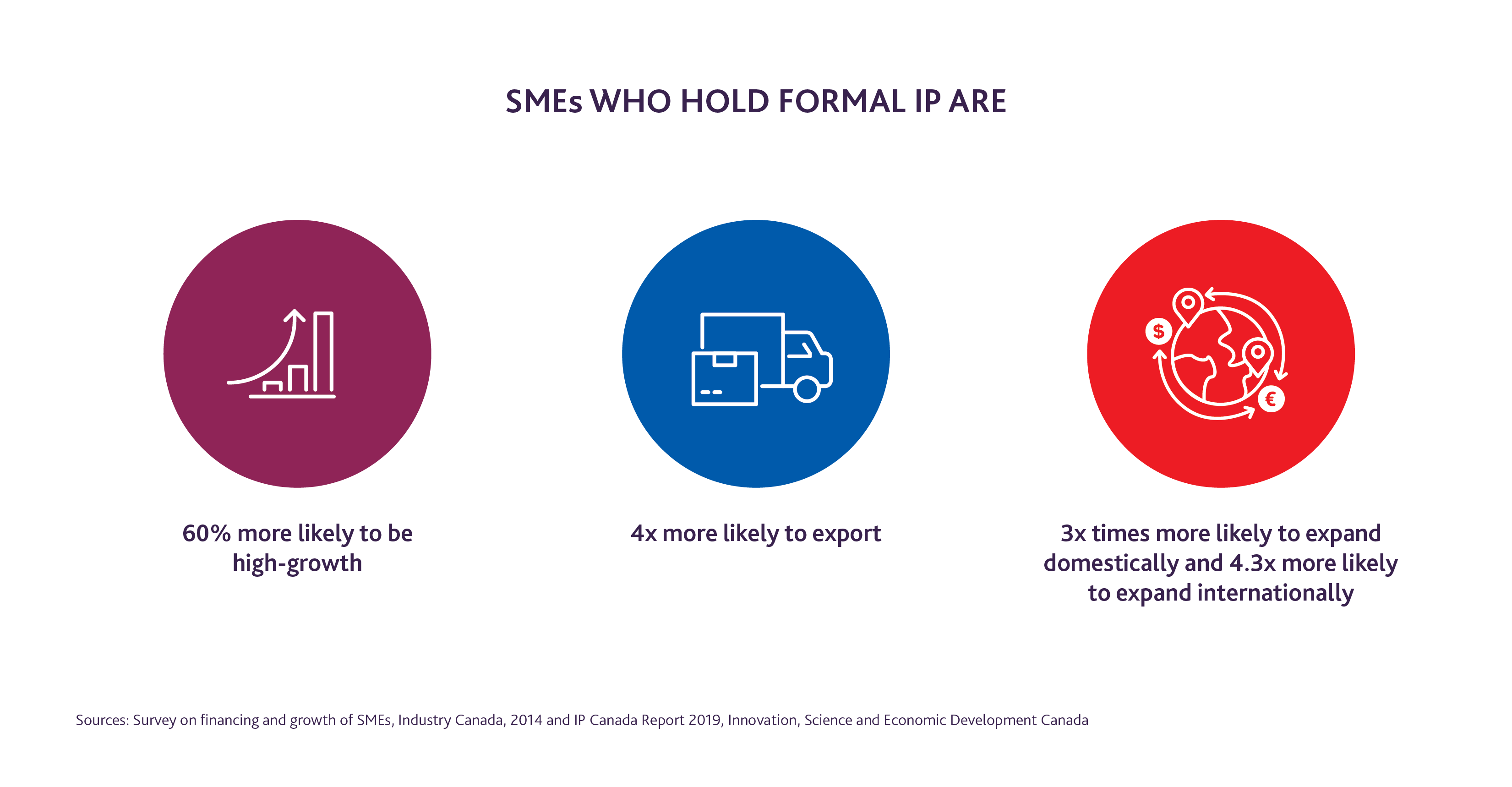Quinn Rochon
Associate
Article
6
Congratulations on surviving the startup phase. A few years under your belt, some lessons learned along the way and perhaps even some early successes. What comes next?
You may have already launched a technology-driven product or service line and are now looking to expand. Perhaps you are looking to make inroads into new markets, further develop a product, purchase new equipment, hire staff or fend off competitors.
No matter what the next phases of growth looks like for you company, you need to raise capital — fast. IP strategy gives you the edge you need to do just that, opening the door to a universe of government funding programs tailored specifically for SMEs.
If you've overlooked patenting in the race to get your business off the ground, the good news is that it's not too late to get started. Below are some of the key considerations that underpin a winning IP strategy.
Many companies make the mistake of approaching patenting in terms of individual products. In fact, it is common for an individual product to contain multiple potential inventions. If you start teasing apart each product or project into separate "new, useful and non-obvious" components, you may well be sitting on a gold mine. The earlier you speak to a patent practitioner the better.
Are your product developers already in the habit of documenting their ideas or their progress on a project? If not, this is a great time to start. Many funding programs need dated contemporaneous written records of research and development over time. These records also provide a great foundation for invention disclosures. Invention disclosures can be done concurrently with funding applications too. In fact, listing pending patent applications on a funding application can be a helpful boost to your eligibility.
Do you have a set of potentially patentable ideas, but limited funds to get patent applications going? Consider prioritizing the concepts closest to market-ready first before moving on to inventions that are speculative or still in progress. Developing a patent strategy out over a longer time span can help spread out costs into fundable chunks as you build a step ahead of the company's product trajectory.
Sophisticated companies not only grab the headlines; they manage tight ships behind the scenes. This is especially critical when it comes to your IP strategy. Do you have employment agreements in place for all key personnel, assignments confirming the company's ownership of inventions and other intangibles, and tracking systems for critical IP due dates? Do you use non-disclosure agreements? Are the signed agreements being managed and in one place? Don't let your smart ideas go walking out the door.
In today's competitive global market, companies can't afford to let their guard down – particularly where IP assets are concerned. Are you tracking competitor activity regularly, and do you have a strategy in place to enforce your IP rights – both at home and abroad? Now is the time to have your plan in place.

 Understand your IP:
Understand your IP: Protect your inventions:
Protect your inventions: Plan ahead:
Plan ahead: Stay organized:
Stay organized:Canadian SMEs with formal IP are more likely to experience high growth, expand into new markets, and receive various types of financing. Contact our IP practitioners to discuss how to take your IP protection and exploitation strategy to the next level.
CECI NE CONSTITUE PAS UN AVIS JURIDIQUE. L'information qui est présentée dans le site Web sous quelque forme que ce soit est fournie à titre informatif uniquement. Elle ne constitue pas un avis juridique et ne devrait pas être interprétée comme tel. Aucun utilisateur ne devrait prendre ou négliger de prendre des décisions en se fiant uniquement à ces renseignements, ni ignorer les conseils juridiques d'un professionnel ou tarder à consulter un professionnel sur la base de ce qu'il a lu dans ce site Web. Les professionnels de Gowling WLG seront heureux de discuter avec l'utilisateur des différentes options possibles concernant certaines questions juridiques précises.